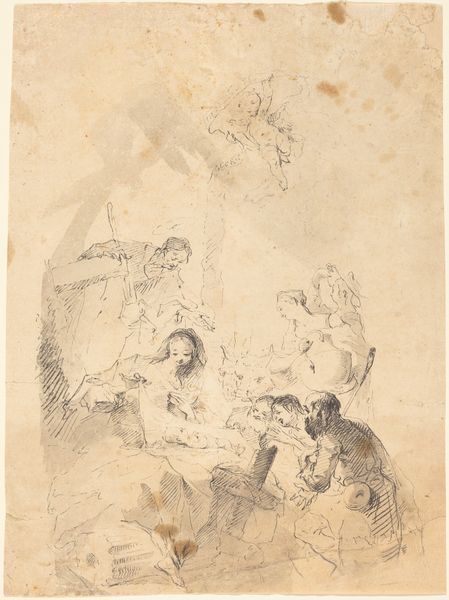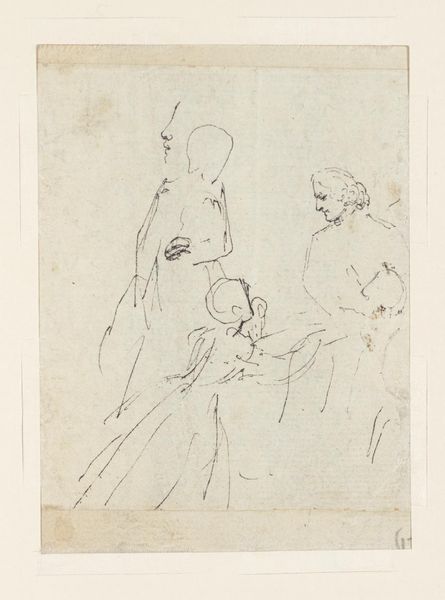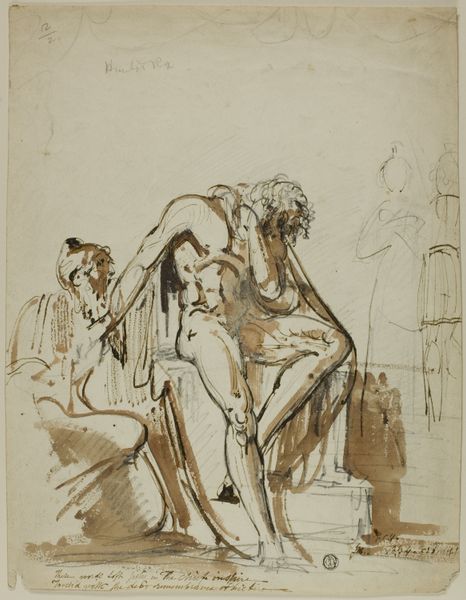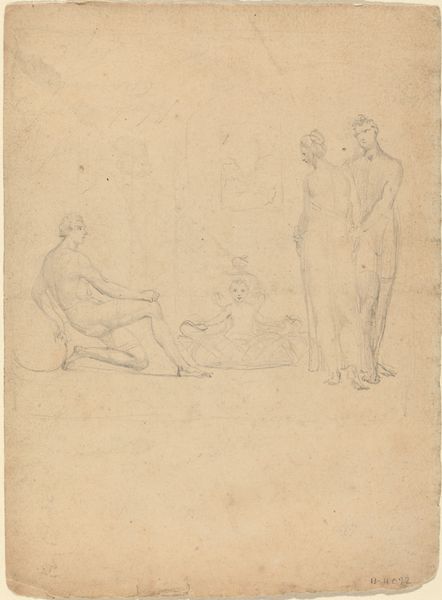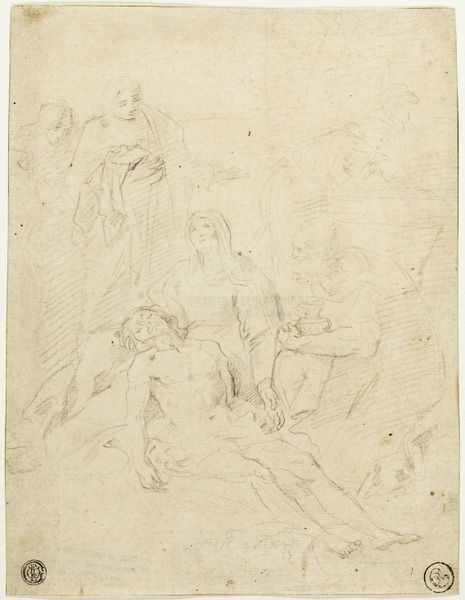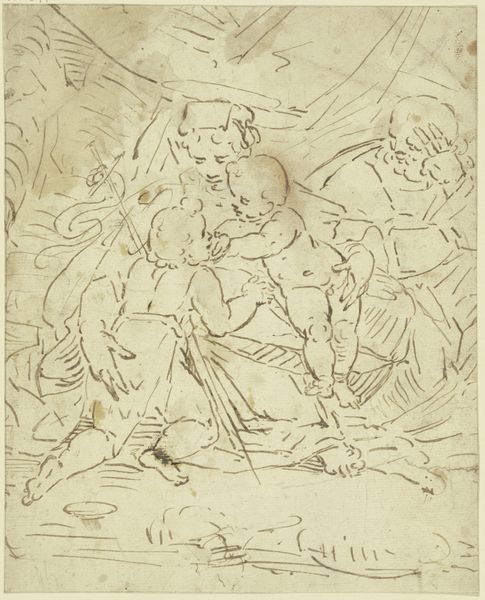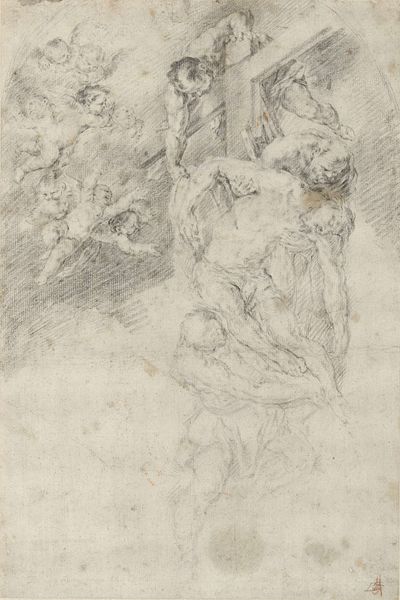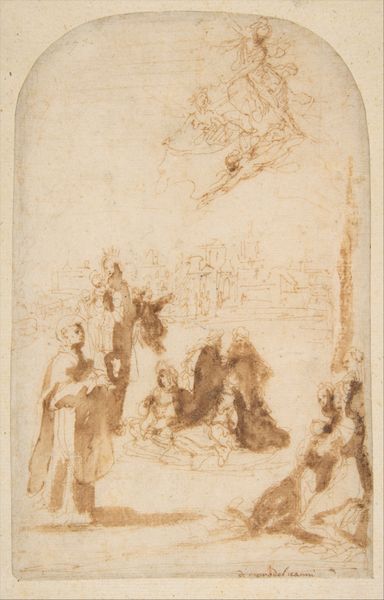
Dimensions: support: 249 x 196 mm
Copyright: CC-BY-NC-ND 4.0 DEED, Photo: Tate
Editor: Here we have Thomas Stothard's "Designs for Rundell and Bridge’s Transparency", housed at the Tate. It's a sketch, very delicate. What strikes me is the contrast between the defined figures in the foreground and the ethereal figures in the background. What do you see in this piece? Curator: Note how Stothard manipulates line and shadow to create depth. The formal arrangement directs the eye; observe how the composition is built on a series of overlapping planes. What do you make of the artist's decision to leave certain areas unfinished? Editor: Perhaps to emphasize the ephemeral nature of a "transparency"? I appreciate how you pointed out the deliberate compositional structure. Curator: Indeed. The strategic use of line weight and the balance of forms contribute to its overall visual harmony. This was enlightening.
Comments
tate 7 months ago
⋮
http://www.tate.org.uk/art/artworks/stothard-designs-for-rundell-and-bridges-transparency-t10009
Join the conversation
Join millions of artists and users on Artera today and experience the ultimate creative platform.
tate 7 months ago
⋮
Stothard was a radical, but he did paint a transparency as part of the celebrations for King George III’s jubilee in 1810. Transparencies were painted in thin oil paint on linen or canvas and lit from behind. Rundell and Bridge were the royal silversmiths; the transparency was displayed in front of their premises on Ludgate Hill. Britain’s triumphs against Napoleon in the current European wars are symbolised by Mars, god of War (right), and Neptune with his trident (left).The sea god was seen as the protector of Admiral Lord Nelson in his naval victories, culminating at Trafalgar in 1805. Gallery label, December 2004
